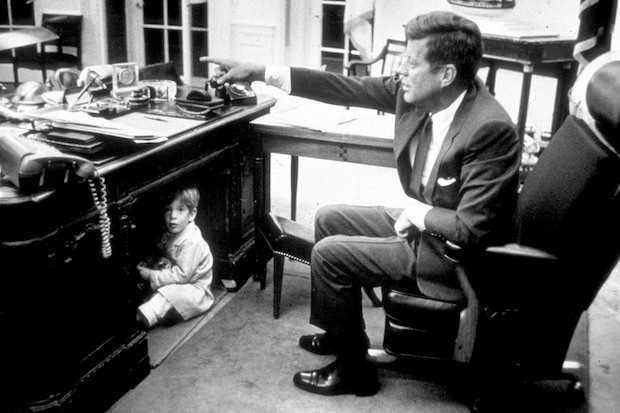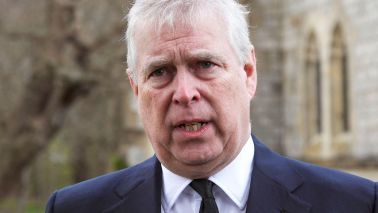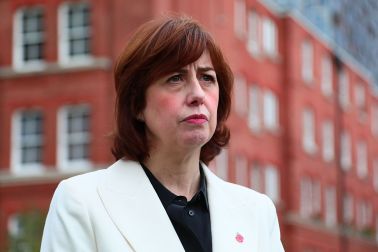Ten years ago, a determined historian transformed our picture of John F. Kennedy. Robert Dallek had finally got his hands on the president’s medical records and discovered just how big a part JFK’s constant health problems played in his life. Instead of a young, fit, athletic leader, Dallek revealed a man racked with pain, suffering from Addison’s disease and excruciating spinal damage and swallowing a daily pharmacy of drugs and potions.
During the Cuban Missile Crisis, for example, when his finger hovered over the nuclear button, he was pumped full of steroids and antibiotics, amphetamines and testosterone, ritalin and sleeping pills. He had been given the last rites on three occasions before he was 35. By the time he came to Dallas, this energetic, charismatic, unstoppable force of nature had spent more of his time in hospital or convalescing than the 1,036 days he spent as president.
An Unfinished Life became a bestseller and was quickly recognised as one of the definitive JFK biographies, striking a shrewd and readable balance between politics and personality. So Dallek has a lot to live up to with his new book, Camelot’s Court: Inside the Kennedy White House.
As always, though, his ear for a great line gives him a head start. Five minutes into his introduction, while the page numbers are still in Roman numerals, he quotes Kennedy talking about political priorities with his old rival Richard Nixon, in the wake of the disastrous Bay of Pigs invasion of Cuba:
It really is true that foreign affairs is the only important issue for a president to handle, isn’t it? I mean, who gives a shit if the minimum wage is $1.15 or $1.25 in comparison to something like this?
Both the language and the thought are absolutely JFK, and much of Camelot’s Court does indeed revolve around three major foreign policy issues of the time — the Cold War, Cuba and Vietnam — and the way Kennedy and his advisers reached decisions about them.
When the new president came to power, he was determined to recruit the brightest brains in the land as his advisers, including, it was quickly apparent, Republicans and Harvard academics in preference to long-serving Democratic politicians. Lack of experience or subject knowledge was no bar. Robert McNamara, the president of Ford Motor Company, was brought in for a chat and offered the job of Treasury Secretary. He turned that down, saying he was ‘not remotely qualified’, and was immediately invited to become Defense Secretary — for which he was equally unprepared. After Kennedy told him there was no school for defense secretaries, any more than there was for presidents, and that they’d both be making it up as they went along, McNamara agreed to take the post.
But even Kennedy’s ‘ministry of talent’ could seldom offer the president wise and consensus-based advice. As a rule, he was operating against a background din of generals urging immediate attack as the only possible solution to every problem, and civilian advisers who could rarely provide practical answers. After the Bay of Pigs fiasco, where he made the new boy’s error of thinking the military and CIA experts might know what they were talking about, Kennedy realised, over the next year, that he had to change his approach.
Dallek charts this slow progress, as JFK listens, questions and gradually comes to the conclusion that he needs to decide all the big issues himself. Some voices ring louder than others and Jack is always especially keen to hear what his brother Bobby has to contribute. But whatever the advisers say, the president has to decide.
In October 1962, when Kennedy gets his first big win, successfully imposing a blockade around Cuba to stop Russian ships bringing in more missiles and eventually negotiating a climbdown by the Soviet leader, Nikita Khrushchev, it is because he has overridden the clamour of conflicting advice and picked his own path through the minefield.
This crisis has often been seen as the turning point of the Kennedy presidency, with JFK moving on to take firm and successful action in his last year on major issues such as civil rights and the nuclear test ban treaty. But Dallek’s specific focus on the decision-making process and the men around Kennedy makes it clear that this is an idealised view.
The administration’s painful inability to reach a coherent policy on Vietnam in the final weeks before the assassination showed that the problems had not gone away. Ultimately, the brains trust approach depended on good intelligence as well as good thinking. As Camelot’s Court makes clear, the poor quality of information coming in for consideration by the country’s leaders threw an extraordinary burden on Kennedy’s own shoulders.
While Dallek’s original discoveries about Kennedy’s health problems made us rethink our view of his presidency, some of the most telling glimpses of Jack’s personality have come from recent studies of his letters, personal and political. But The Letters of John F. Kennedy edited by Martin W Sandler, which draws on the Kennedy Presidential Library’s two million items of correspondence to, from and about JFK, is disappointingly conventional.
There is no sign, for example, of the early and revealing letters exchanged between the young Kennedy and LeMoyne Billings. his gay room-mate from boarding school. Lem risked his 17-year-old chum’s wrath by writing an explicit love note to him, and we still have Jack’s curt reply: ‘Please don’t write to me on toilet paper any more. I’m not that kind of boy.’ Yet Billings became an ever-present factor in JFK’s life, with his own room in the White House. He was even offered the choice of two plum jobs — ambassador to Denmark or first head of the Peace Corps — as a reward for his loyalty.
Billings was important to Kennedy. Their summer together touring Europe in 1937 was clearly a formative experience and their correspondence, which includes wartime letters, is full of frank, unexpected insights into the making of the president.
The only letter in this book from Kennedy’s time at the Choate School is from Jack and Lem’s detested house-master, J. J. Maher, complaining about the boy’s lack of neatness. ‘Jack studies at the last minute, keeps appointments late, has little sense of material value, and can seldom locate his possessions,’ says Maher (wrongly written here as ‘John J. Maker’). Years later, Kennedy’s campaign staff would face the same problem of trying to get him organised for meetings and rallies.
Kennedy’s loyal, immensely talented but immensely self-serving speech-writing collaborator, Theodore Sorensen, always managed to imply, politely, that he was responsible for all the president’s best lines. This collection proves, especially in the more informal notes, that JFK was capable of turning a memorable phrase himself.
There are echoes of policy issues, too, in even the most personal letters. Writing to a woman whose brother had died in Vietnam, he explains, ‘I know that, as a soldier, he knew full-scale war in Viet Nam is, at the moment, unthinkable’, adding that ‘forty-five American soldiers, including your brother, have given their lives’.
One minor irritation in a book that is built on quotations from letters is the careless editing that has Kennedy, for example, saying: ‘It would seriously underline their position’ and a letter from JFK to Eisenhower that is signed ‘General Dwight D. Eisenhower’. These are not the only instances and they blunt the impact of what is otherwise a useful and interesting volume.





Comments